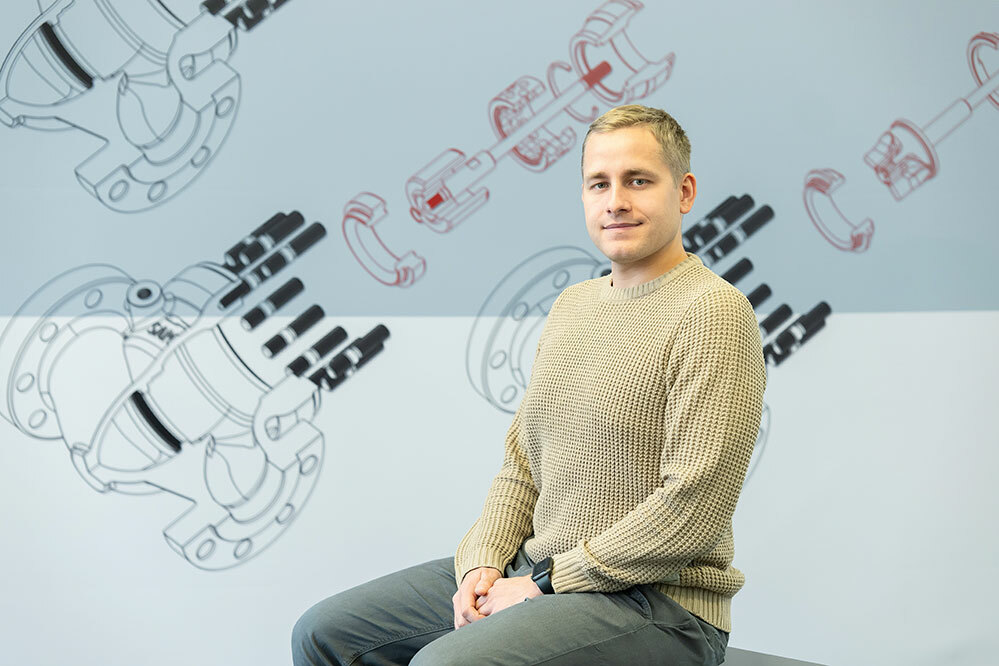Energy Concept
With MainChange, SAMSON is laying the foundation for energy-efficient and climate-friendly production. From the outset, the new plant in Offenbach has been designed to incorporate state-of-the-art energy-saving technologies and enable sustainable manufacturing processes.
The result is an energy-efficient campus unlike any other in the Rhine-Main region. We rely on renewable energy sources such as solar power and integrate heat and cooling pumps. In the long term, we aim to replace our entire natural gas consumption with green hydrogen, further reducing CO₂ emissions.
To optimize energy efficiency, we are enhancing the insulation of our buildings to minimize heating and cooling loads and constructing a centrally controlled energy hub to efficiently supply the entire campus. This approach increases our energy self-sufficiency and reduces dependence on external energy sources. Even in district heating, we rely on our own products—an advantage made possible by our expertise in plant and control technology.
Green facades, extensive green spaces, and retention roofs further improve the microclimate, promote biodiversity, and contribute to sustainable rainwater management.
With these measures, we are setting a strong example for the industry in the Rhine-Main region, making our plant a flagship project for energy-efficient operations.
The MainChange project will revolutionize energy management at SAMSON. What changes and innovations does this project introduce, and what are its main objectives?
With the construction of our new site, we have a unique opportunity to implement a comprehensive and innovative energy concept that goes far beyond simply reducing energy consumption. Our goal is to establish a modern, efficient, and sustainable energy supply. This involves not only utilizing the latest energy generation technologies but also adopting advanced methods for energy storage and usage.
What does the concept look like in practice?
We are implementing a combination of modern insulation to minimize heating and cooling loads, a central energy hub to supply the entire campus with heat, cooling, and compressed air, and extensive use of renewable energies such as solar power. These measures will not only reduce environmental impact but also increase the site’s energy self-sufficiency, making us less dependent on external energy sources.
What savings do you expect compared to the previous site?
For heating, we anticipate savings of 30 to 40 percent, although a precise assessment will only be possible after a year of operation. Electricity consumption will remain constant due to the relocation of production machinery. However, by installing solar panels, we can significantly increase our in-house energy production. We aim for self-sufficiency of 50 to 60 percent, which could be further increased through the expansion of solar systems and energy storage solutions.
How will the new energy concept impact the environment, and how close will you get to CO2 neutrality?
Our goal is to significantly reduce CO2 emissions. By eliminating steam and gas usage and incorporating heat pumps, we will achieve a substantial reduction in CO2 output. Additionally, using green electricity from our photovoltaic systems will further decrease our carbon footprint. However, we will not be entirely CO2 neutral.
What is the plan for gas usage, and what role does hydrogen play?
We have minimized gas consumption to an absolute minimum. The only remaining application is a drying oven in the paint shop, which can also be converted to electric operation. In the long term, we plan to completely replace gas with green hydrogen, effectively eliminating CO₂ emissions in this area. For this, we depend on future hydrogen infrastructure in Offenbach and are also considering establishing our own hydrogen production on-site.
What advantages would this offer SAMSON?
First and foremost, it would allow us to generate our own energy, potentially using our photovoltaic system. We could also integrate our own products into this setup, creating a “showcase facility” for customers. This would combine local, climate-friendly hydrogen production with a strong promotional opportunity for SAMSON.
Can you also benefit from district heating?
Yes, we will use district heating, for example, to heat the electroplating facility. Thanks to our expertise in plant and control technology, SAMSON AG products will also be utilized in this area.
Will the electricity from the PV systems be sufficient for internal needs?
Unfortunately, not entirely. As a manufacturing company, we have a high electricity demand. That’s why we plan to expand our solar installations after the plant is completed. Currently, we are planning for a capacity of up to 4.5 MWpeak, which can be increased to 8.5 MWpeak through expansion. However, regulatory approvals and permits play a crucial role in this process and may take some time.
Are you satisfied with the project's progress?
Absolutely! Not only will the new site be significantly more energy-efficient than our previous one, but we are also building a unique energy-efficient campus within the Rhine-Main region. Despite some hurdles, such as the rejection of geothermal energy or river water heat pumps, we have developed a forward-thinking energy concept. Once the campus is complete, we will undoubtedly identify further optimization opportunities, particularly in energy monitoring. We are well-positioned for the future and will continue working on innovative solutions. As an employee, I take great pride in this project and in my employer, who is driving it forward.

